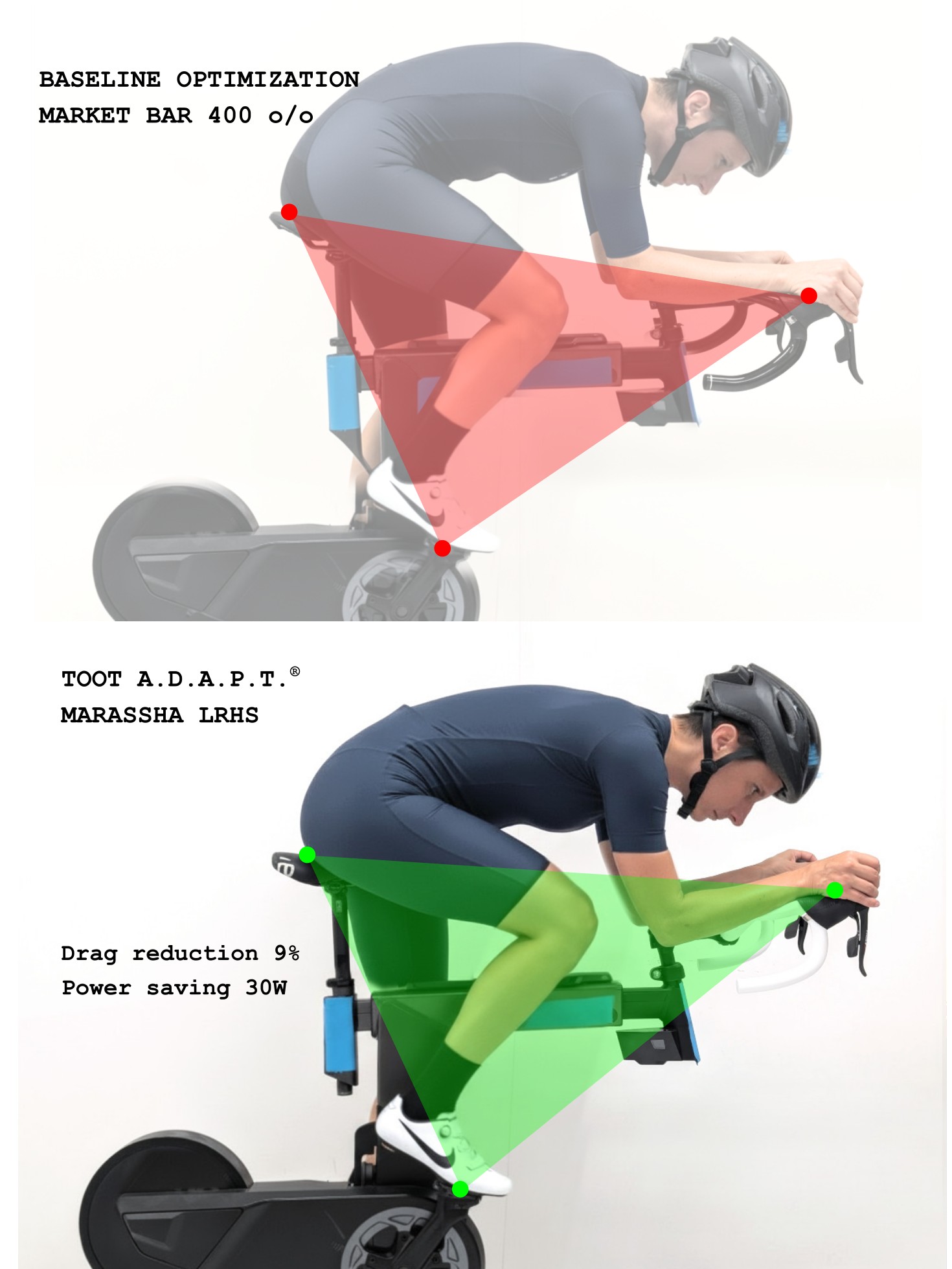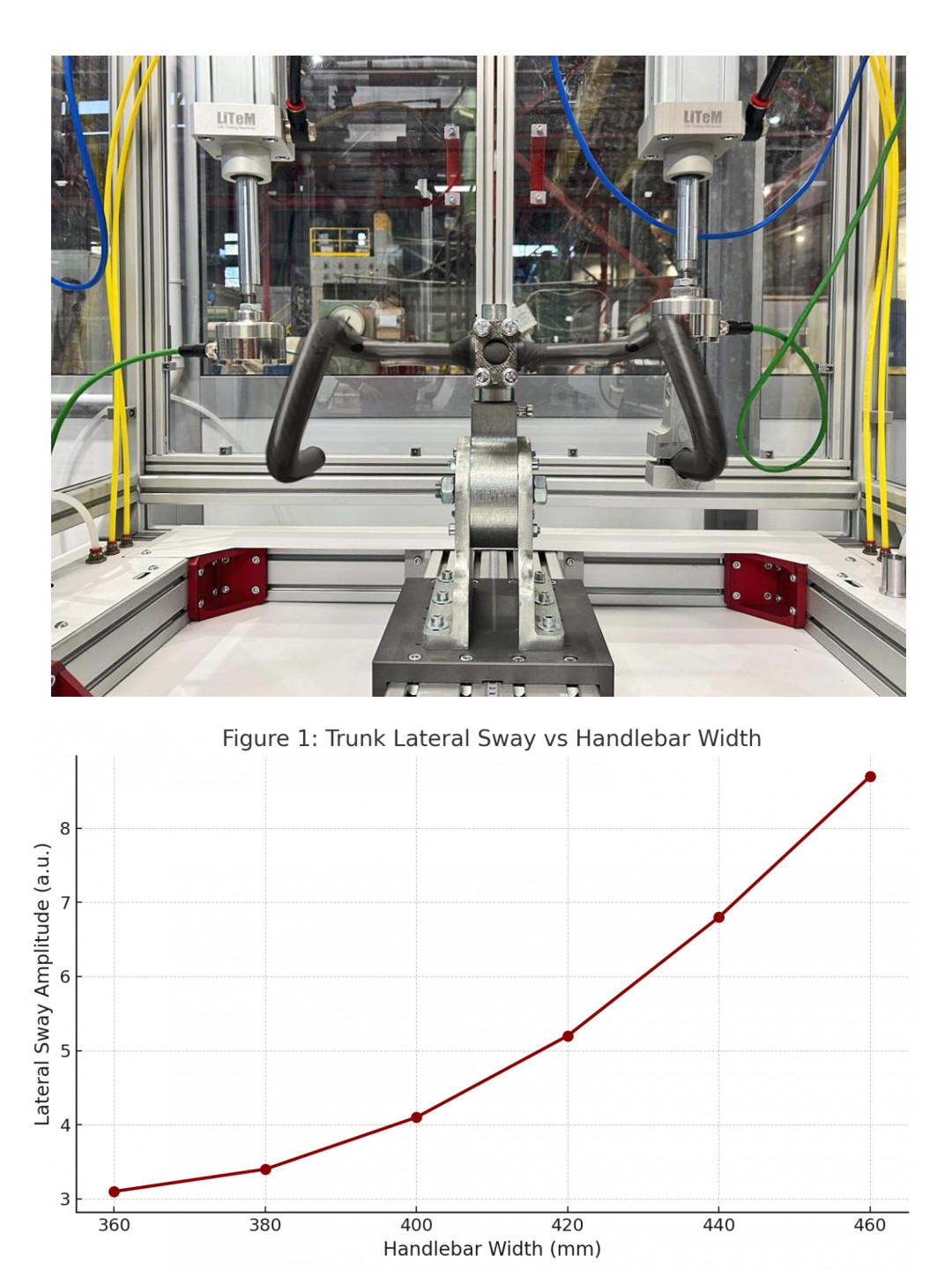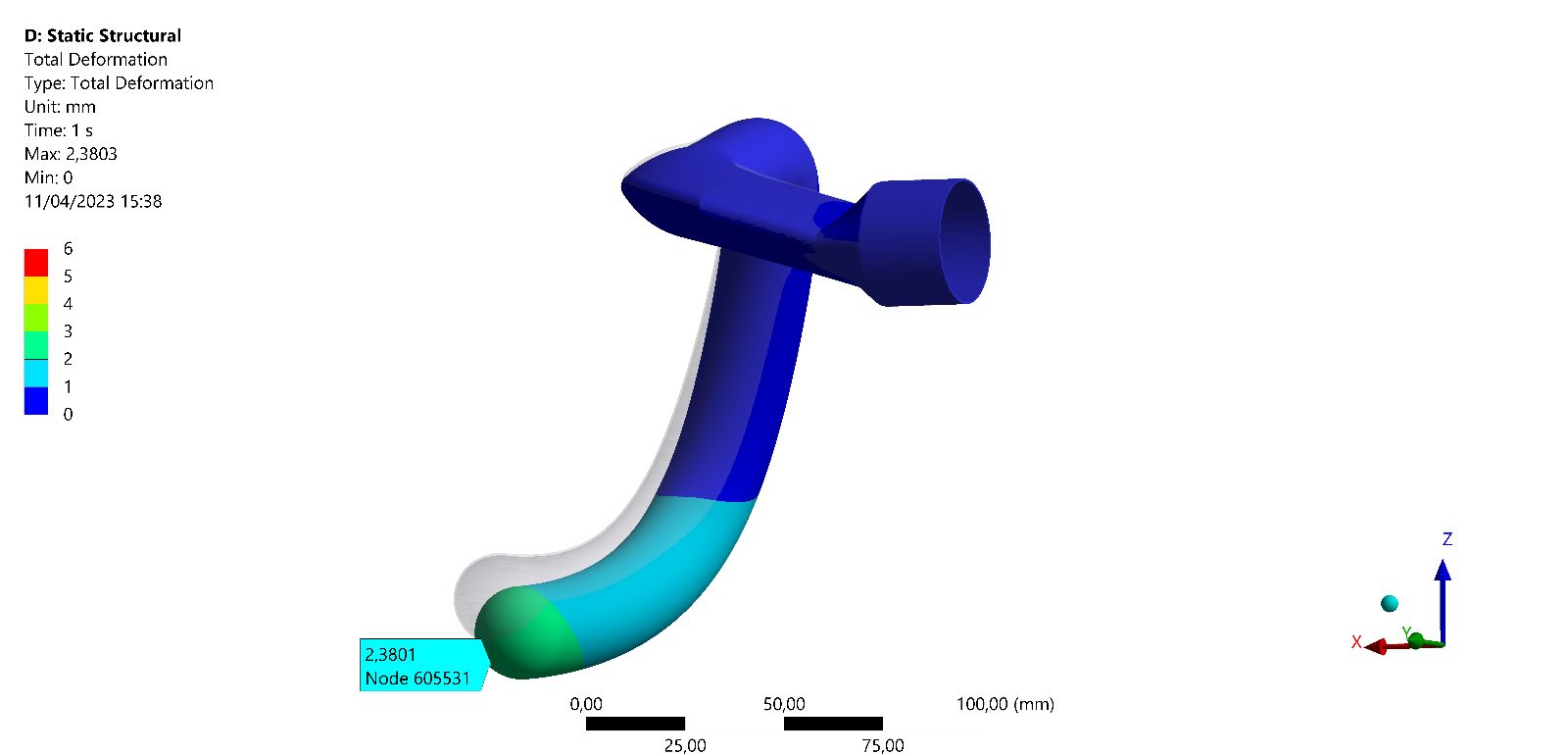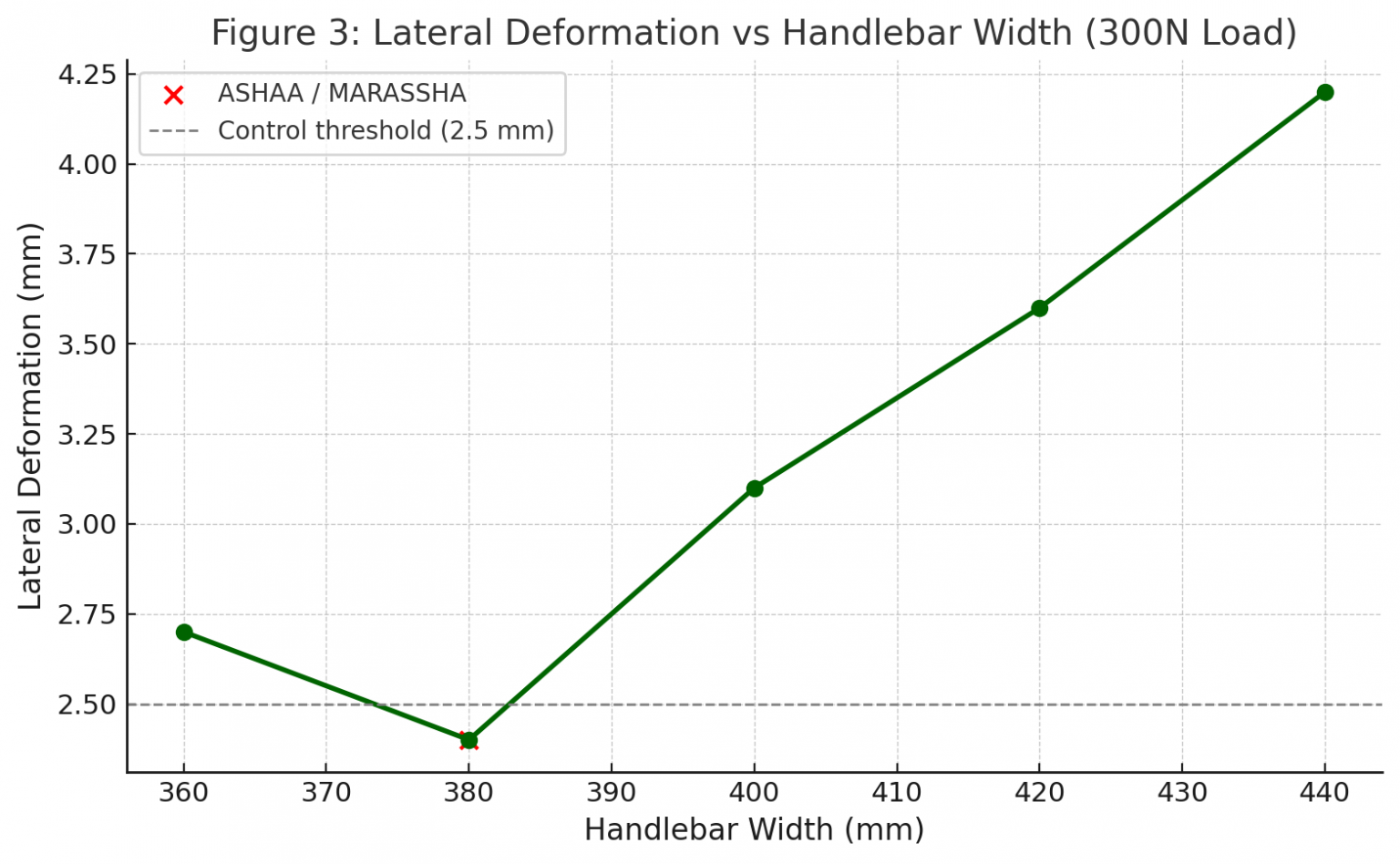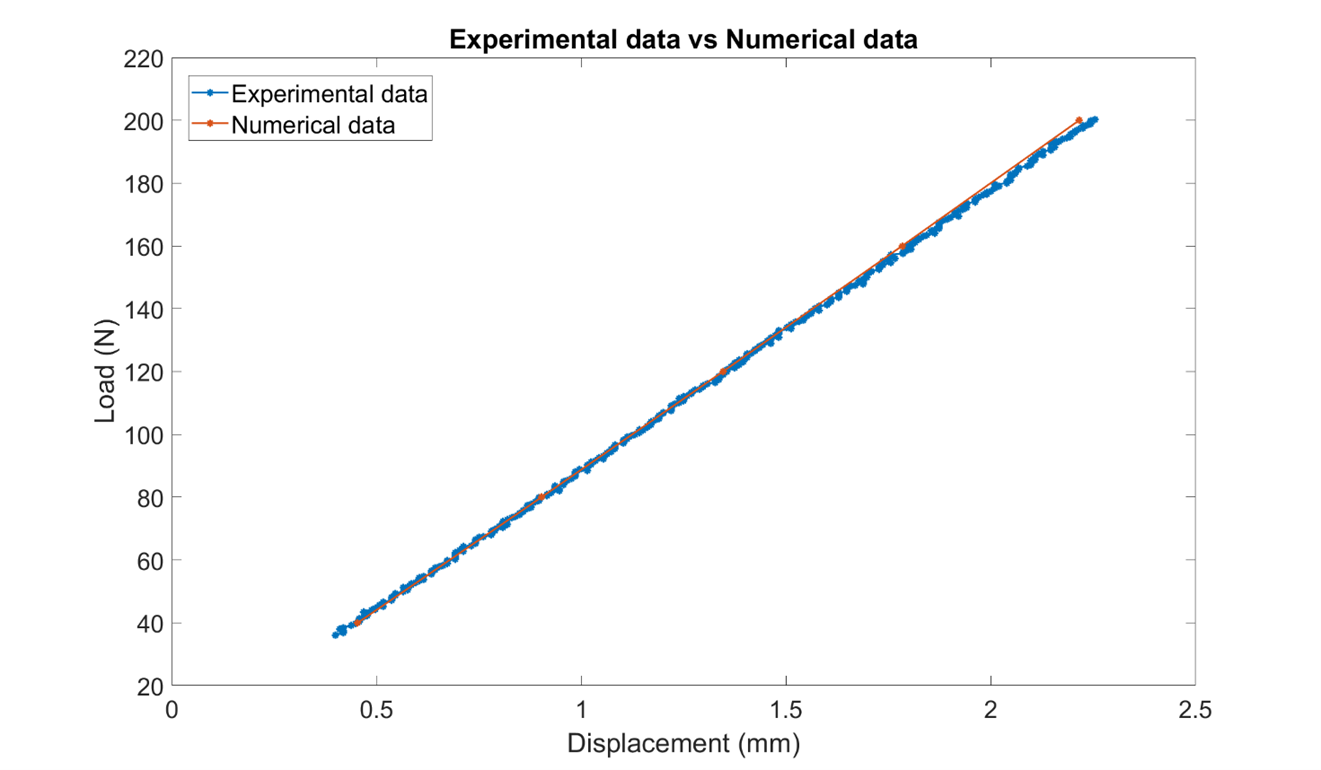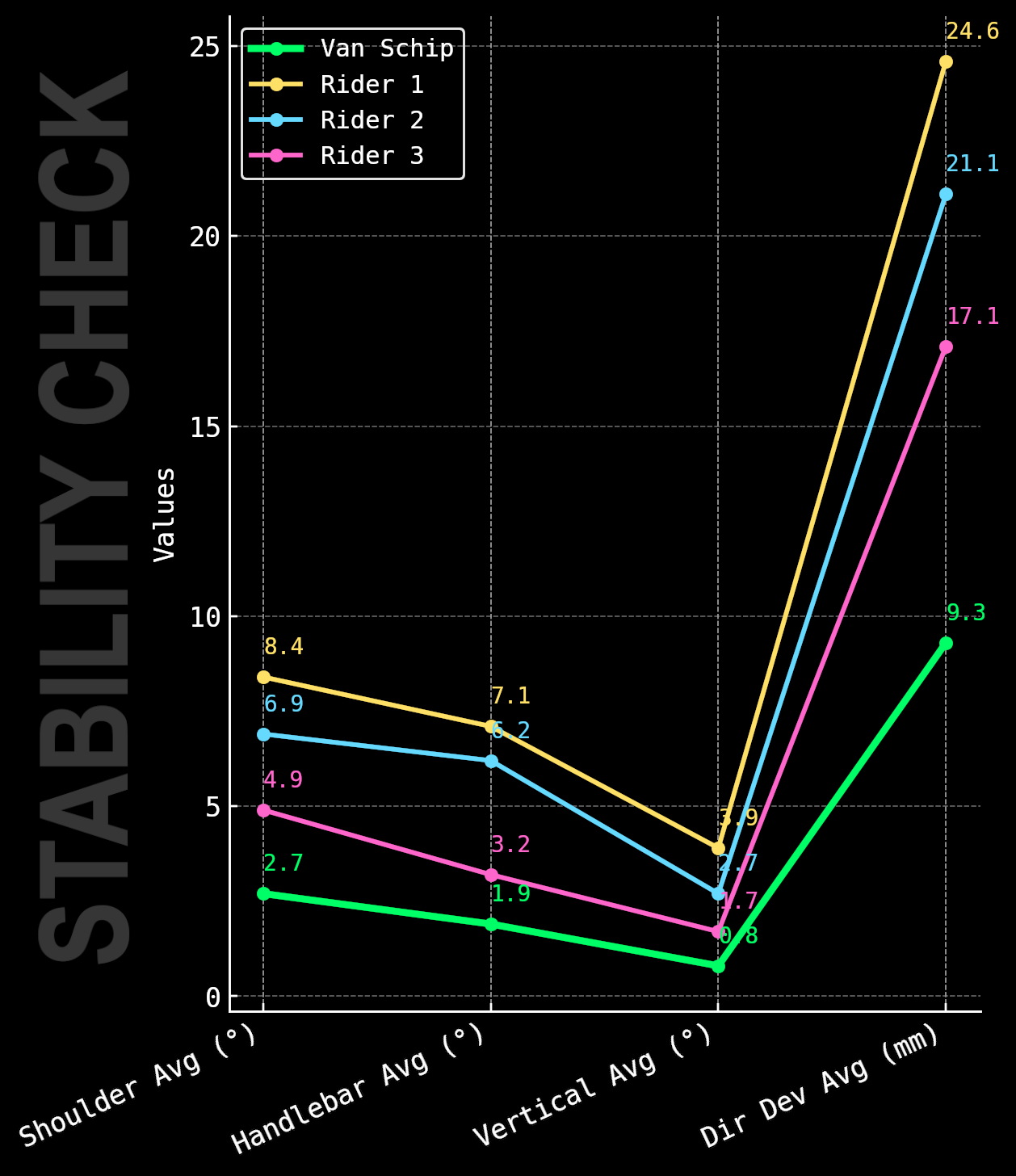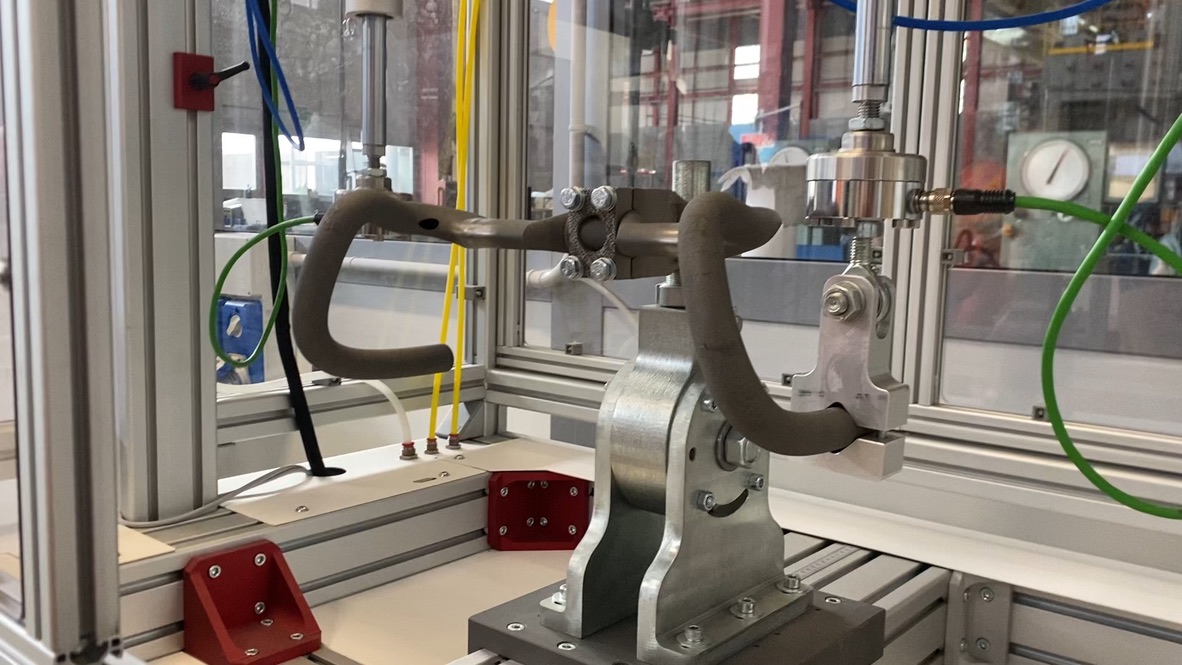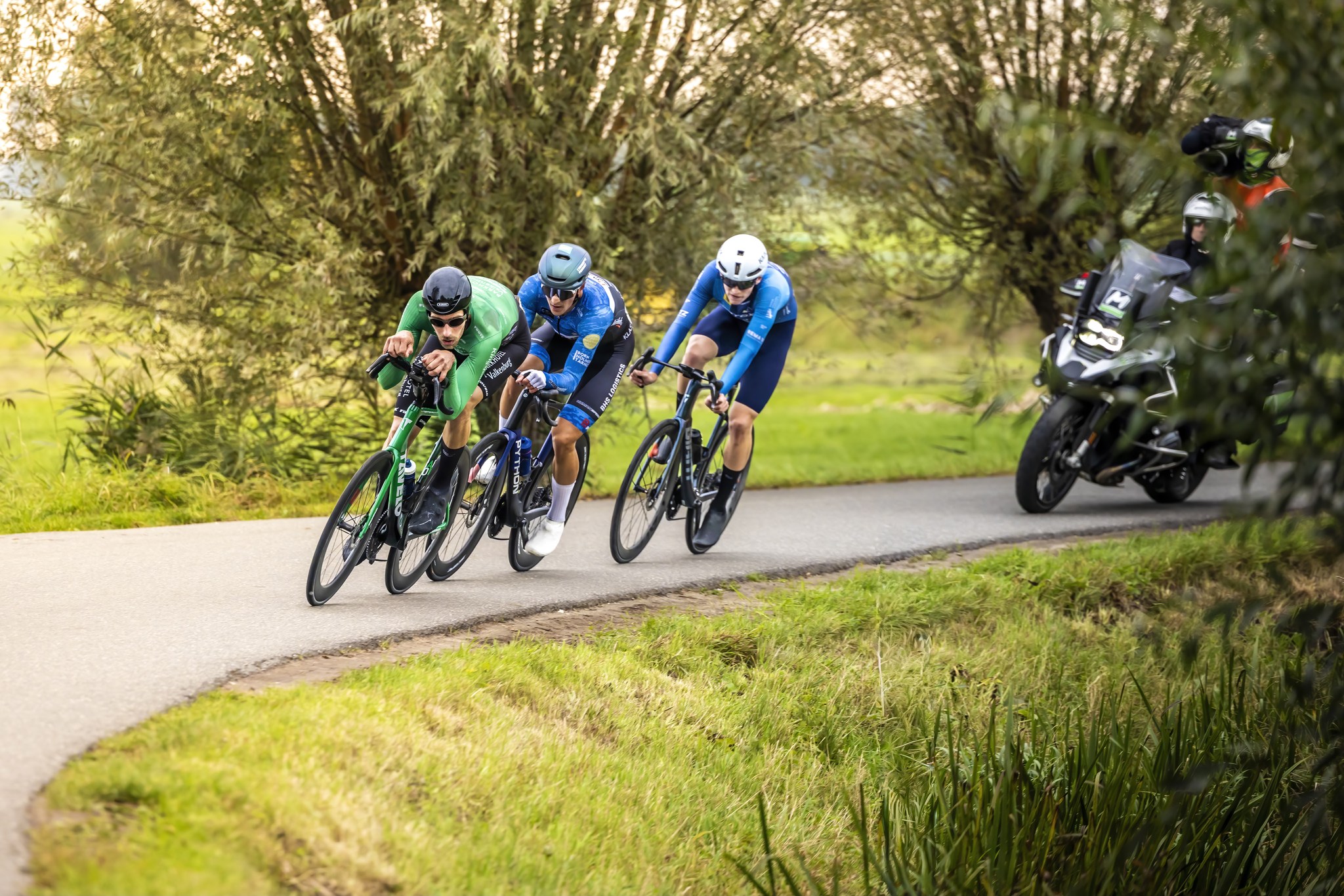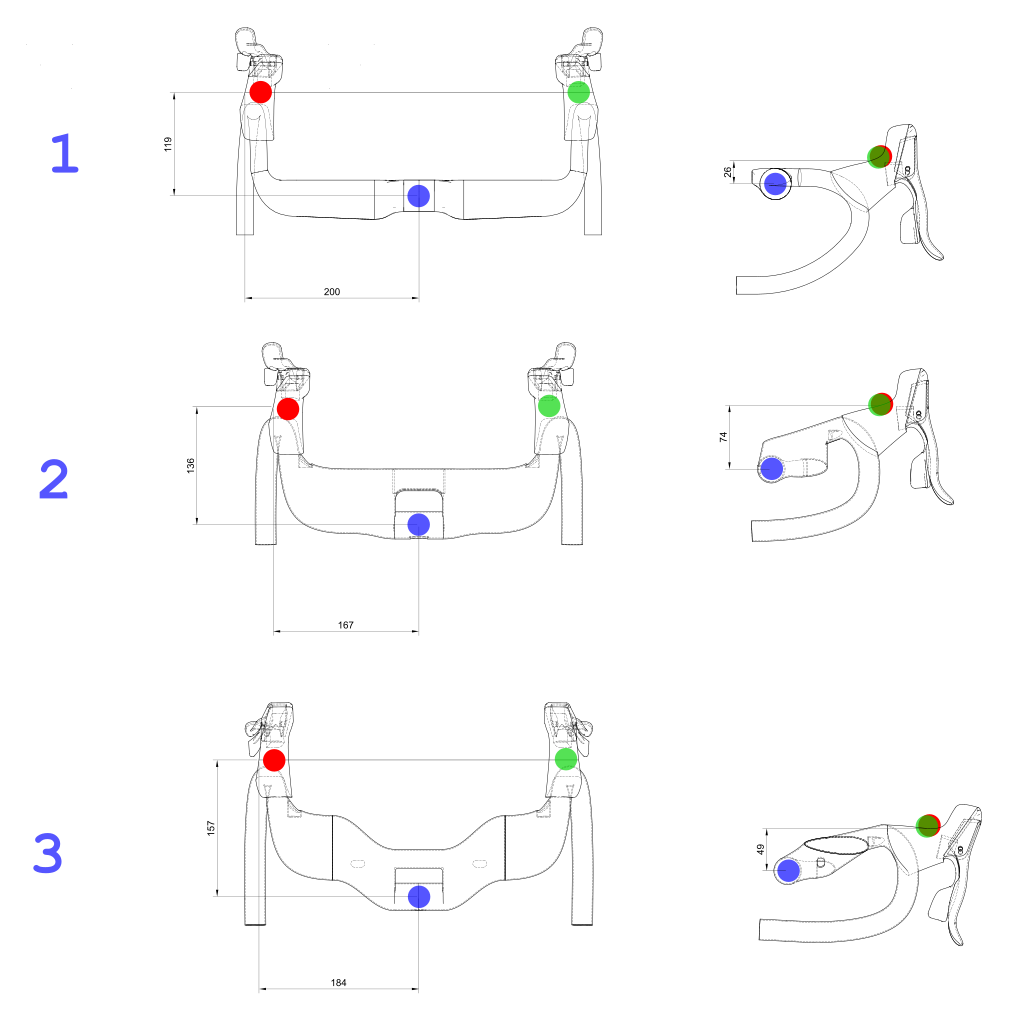This page is not a protest against the UCI. It’s not a plea. It’s not an open letter. It’s simply how TOOT Engineering works. With rigor. With facts. With respect. And above all, by placing the athlete at the center. If some cyclists prefer to follow empty rules, so be it. But if you’re looking for a more conscious, reasoned way to choose based on your real needs and your passion— this is our path.
...it's because that's why.
From the Dogma of Measurement to Market Distortion: A Critical Analysis of the UCI Regulation on Minimum Handlebar Width and its Implications for Free Competition
This technical and regulatory position paper critically examines the recent regulatory restrictions from the Union Cycliste Internationale (UCI), focusing on the imposition of arbitrary dimensional thresholds for cycling components, specifically the minimum handlebar width of 400 mm (measured outer-to-outer). This document demonstrates the illegitimacy of this approach on two distinct fronts. On a technical and scientific level, based on mechanical tests (conducted at the COMPMECH lab, University of Pavia) and dynamic analyses, it refutes the premise of safety, proving that the rule may paradoxically increase risks. On a regulatory and economic level, it analyzes how the rule, lacking any objective foundation, constitutes a potential violation of free competition laws (Art. 101-102 TFEU) by conditioning the market, penalizing innovative Small and Medium-sized Enterprises (SMEs), and constituting an abuse of a dominant position. The objective of this paper is to urge a fundamental reassessment based on scientific evidence and respect for the principles of a competitive market.
TOOT Engineering, in collaboration with Bianca Advanced Innovations, the COMPMECH laboratory – Department of Civil Engineering and Architecture, University of Pavia. Simulation of an Ultrasonic Immersion Test for the Characterization of road race handlebars at Polytechnic University of Bari
1. THE PARADOX OF LEVERAGE: WHY WIDER IS LESS SAFE
The intuitive assumption that a wider handlebar offers superior control due to increased leverage is fallacious when applied to the dynamics of high-speed cycling. Telemetry data analysis and biomechanical simulations demonstrate that increasing handlebar width proportionally increases the amplitude of the rider’s lateral body sway. This undesirable biomechanical coupling creates a vicious cycle that compromises the stability of the rider-bicycle system, leading to:
- Increased risk of dynamic instability: A longer lever arm amplifies involuntary body inputs, making the system more susceptible to triggering high-frequency oscillations like shimmy (high-speed wobble).
- Worsened control on descents: The larger range of motion required for trajectory corrections makes steering less precise and more fatiguing, especially on technical and fast sections.
- Delayed and imprecise reactions: During explosive efforts like sprints or in rapid changes of direction, an excessively wide handlebar increases reaction time and the system’s inertia, reducing the effectiveness of the athletic action.
Conversely, optimized cockpits with narrower widths (e.g., 380 mm or less, depending on the athlete) provide more direct and damped feedback. They reduce the physical amplitude of oscillations transmitted to the rider, enabling faster and more precise micro-corrections.
Analogy with MotoGP: The human-machine interface is not optimized by maximizing leverage, but by improving the fidelity and speed of signal transmission. The cockpits of Grand Prix motorcycles are intentionally narrow to prioritize fine control, sensitivity, and the prevention of panic-induced reactions. A narrow handlebar transmits an oscillation that is perceived as less violent, allowing the rider to manage instability with technique, not brute force. This principle is even more critical in cycling, where the rider’s mass constitutes a much larger fraction of the total system mass.
2. THE WIDTH/REACH RATIO: THE PREDICTIVE INDEX OF DYNAMIC STABILITY
Vehicle stability is not governed by an isolated dimension, but by geometric ratios. The key parameter for the predictability and control of the front end is the ratio between the handlebar’s width and its reach. Our dynamic simulations, validated by tests, indicate that:
- A Width/Reach ratio between 3.8 and 4.5 defines an optimal range that ensures an ideal balance between responsiveness and stability.
- Exceeding a critical value of 5 (e.g., a 420 mm wide handlebar with an 80 mm reach, ratio = 5.25) leads to an exponential decay in control, resulting in a “nervous” or “twitchy” response and a tendency to over-correct.
- Products like ASHAA and MARASSHA are natively designed to operate within this optimal range, guaranteeing superior stability and a drastic reduction in uncontrolled reactions at high speed.
This design philosophy is fundamental in motorsports. In MotoGP and Formula 1, the relationship between steering geometries (e.g., trail, rake angle) is meticulously studied to achieve predictable behavior at the limit, not to adhere to predefined measurements.
3. STIFFNESS VS. DEFORMATION: SAFETY IS A MECHANICAL, NOT A DIMENSIONAL, FACTOR
The safety of a critical component like a handlebar lies primarily in its structural stiffness and fatigue resistance. Static lateral tests performed at the COMPMECH laboratory, applying an out-of-phase load of 300N on the drops (simulating a violent sprinting action), have shown that:
- High-performance handlebars like ASHAA (380 mm) do not exceed 2.5 mm of lateral deformation.
- Good-quality commercial handlebars of 420 mm easily exceed 3.5 mm of deformation, with some models reaching 4 mm.
A greater width, for the same weight and manufacturing technology, inevitably implies lower stiffness. Excessive deformation introduces a delay and imprecision between the rider’s input and the wheel’s response—a highly dangerous decoupling during an emergency maneuver. The geometry imposed by the UCI rule, therefore, pushes towards components that are either structurally less safe or, alternatively, heavier to compensate for the loss of stiffness, contradicting every principle of engineering optimization.
Analysis of the On-Bike Stability of Athlete Jan-Willem van Schip
We present on this report the results on the stability assessment of athlete Jan-Willem van Schip in various race situations, as shown in a video clip of approximately 2 minutes.
AI features based on video key captures was integrated in the proprietary live tracking software to compare 4 different athletes in the Arno Wallaard Memorial 2025.
Using a software analysis framework AI supplied, the athlete’s ability to maintain a constant posture and control of the bike was evaluated. The results indicate an exceptional and consistent level of dynamic stability, which manifests as an almost complete immobility of the core and superior control of the bike, even during phases of maximum effort.
Methodology and Parameters of Analysis
The video analysis is based on the following metrical-conceptual parameters, used to interpret and validate the visual observations:
- Recognition of Anatomical Reference Points (Keypoints): The conceptual identification of key body points (center of the head, shoulder line, hip line, front wheel) as a basis for movement evaluation.
- Analysis of Postural Variance Over Time: Considered the primary indicator of stability. It assesses the consistency of the geometric relationships between the keypoints over time. A low variance (minimal change) indicates high stability.
- Analysis of Relative and Comparative Motion: Assesses the movement of one part of the system relative to another (e.g., athlete vs. bicycle) to determine the level of control. It is also used to compare the stability of one athlete to others in the frame.
Detailed Stability Analysis
– Stability in the Peloton (Low-Complexity Environment)
In the initial phases, the athlete is in the peloton. By applying the Analysis of Postural Variance, it is observed that his keypoints (head, shoulders, hips) maintain an almost invariant geometric relationship (angula variance).
The vertical stability of his head is maximal, with oscillations (front wheel) close to zero relative to the frame.
The Analysis of Comparative Motion with surrounding athletes highlights how his figure remains significantly more still and composed (-25% lateral shoulders sway -27% front wheel deviations).
– Stability in a Breakaway (High-Effort Environment)
This phase is the most significant test for stability.
Core Stability: Even while delivering maximum power, the Analysis of Postural Variance of his core (shoulder-hip relationship) remains minimal (<12mm).
The system shows no twisting or lateral rocking, confirming that the torso acts as a single, inert platform.
- Upper Body Movement Management: The slight movement of the shoulders, evaluated through the Analysis of Relative Motion, reveals a controlled oscillation with constant amplitude and frequency. This indicates a movement actively managed for balance control, not a passive instability due to effort.
- Bike Stability: The Relative Motion between the athlete and the bicycle is minimal. The bike does not exhibit lateral sway, demonstrating that the body’s stability translates directly into precise and stable handling.
Stability While Cornering (Technical Control)
Cornering control highlights a superior management of the Relative Motion between the athlete-system (main symmetry axle) and the bike-system. The stable core (evidenced by the low Postural Variance) acts as a central pivot, allowing the bicycle to lean smoothly and predictably. The athlete does not disrupt his posture to navigate the turn but rather guides it with a control that originates from a solid bodily platform.
Based on the defined analysis parameters, Jan-Willem van Schip demonstrates an elite level of stability. His ability to minimize Postural Variance even under maximum effort and to precisely manage the Relative Motion of his body and bicycle qualifies him as a model of dynamic stability. The observations are not subjective impressions but the confirmation of an exceptional postural consistency validated through the agreed-upon reference parameters.
AERODYNAMICS IS JUST A CONSEQUENCE
4. THE ANOMALY OF CYCLING: AN ANTI-SCIENTIFIC REGULATORY APPROACH IN COMPARISON
Technologically advanced sports base their safety rules on physical principles and evidence-based risk analysis.
- MotoGP/Formula 1: The rules do not impose arbitrary limits on control interfaces. They aim to manage energy (e.g., safety cells), optimize grip (aerodynamics, tires), and ensure the vehicle’s predictability at the limit. Safety is the result of good engineering, not a dimensional constraint.
- Alpine Skiing: Regulations on sidecut, turn radius, and binding heights are the direct result of biomechanical studies and statistical analysis of injuries. The rules follow the science of dynamics and physiology.
Cycling, with this proposal, would stand in stark contrast, attempting to define safety through a metric dogma (400 mm) that completely ignores:
- The fundamental anthropometric differences between a 165 cm rider and a 195 cm rider.
- The complex biomechanical interactions between the rider’s position and the vehicle’s response.
- The real functional parameters (W/R ratio, structural stiffness) that determine control and safety.
5. BEYOND THE TECHNICAL: THE RULE AS A TOOL FOR MARKET CONDITIONING AND VIOLATION OF COMPETITION
The technical regulations in question transcend the sporting sphere to directly impact the dynamics of free competition. As TOOT Engineering, and as players in cycling innovation, we have invested significant resources in research and development, always operating in full compliance with existing regulations to offer cutting-edge products for both performance and safety.
The justifications provided by the UCI for these new restrictions, allegedly based on safety, appear to lack objective foundation and are contradicted by a different reality. Recent statements, such as those from Adam Hansen of the CPA, have revealed that decisions were imposed after the industry “couldn’t give a number” to the UCI during negotiations. This suggests the rules stem not from concrete risk data, but from a failed negotiation dynamic, making them an arbitrary imposition.
It is crucial to clarify a fundamental point: the cycling “market” is not exclusive to the World Tour circuit. By its own regulations, which stipulate that “equipment used in official competitions must be sold on the market to anyone,” the UCI uses its sporting regulatory power to directly condition the free market.
The consequences of such arbitrary rules are clear and severe:
- Unjustified Penalization of SMEs: Companies like ours, which innovate and create dozens of jobs with high-performance, safe products, see those products rendered “illegal” without valid technical reason, nullifying investments and know-how.
- Stifling of Innovation: Research and development of advanced solutions that fall outside a predefined “box” set by a select few are discouraged, crystallizing technological development around conservative solutions.
- Distortion of Competition: Established players, who may benefit from a more standardized market, are indirectly favored, creating de facto barriers to entry for smaller, more innovative companies.
There is no proven record of incidents or specific dangers directly attributable to narrow handlebars, aerodynamic forks, or deep-section wheels. The true causes of safety risks in cycling are different, well-known, and documented.

We firmly reiterate that such practices may constitute serious violations of competition law. We make explicit reference to Articles 101 and 102 of the Treaty on the Functioning of the European Union (TFEU), which prohibit anti-competitive agreements and abuse of a dominant position, respectively. The UCI, as the sole global governing body, holds a de facto dominant position, and imposing it to condition the market to the detriment of some operators constitutes a potential abuse. These principles are also protected by national laws (e.g., Law 287/90 in Italy) and international frameworks (e.g., U.S. antitrust laws), which safeguard the free market from monopolistic and lobbying practices.
TOOT ENGINEERING STAFF
6. CONCLUSIONS AND RECOMMENDATIONS: FOR SAFETY BASED ON EVIDENCE AND A FREE MARKET
The analysis conducted has demonstrated on two levels that the imposition of a minimum handlebar width of 400 mm is an illegitimate measure. On a technical level, it lacks scientific basis and is potentially dangerous. On a regulatory level, it constitutes an arbitrary action that distorts competition and penalizes innovation.
Therefore, as TOOT Engineering, we are not making requests of the UCI. We reserve our right to act in the appropriate legal venues in accordance with the laws and principles that protect free competition. However, in the best interest of cycling and its athletes, we believe the only viable path forward for the Federation is to:
- Immediately withdraw the proposed regulation, acknowledging its technical baselessness and anti-competitive issues.
- Establish a transparent and inclusive technical-scientific working group, actively involving designers, specialized university laboratories, manufacturers (both large and small), and athlete representatives.
ù
Develop a new regulatory approach based on functional performance standards (e.g., deformation limits under load, fatigue tests, optimal ranges for geometric ratios) and subject it to a Competition Impact Assessment to prevent the creation of unjustified barriers.
TOOT ENGINEERING STAFF
MARASSHA 26URC UCI 2026 COMPLIANT
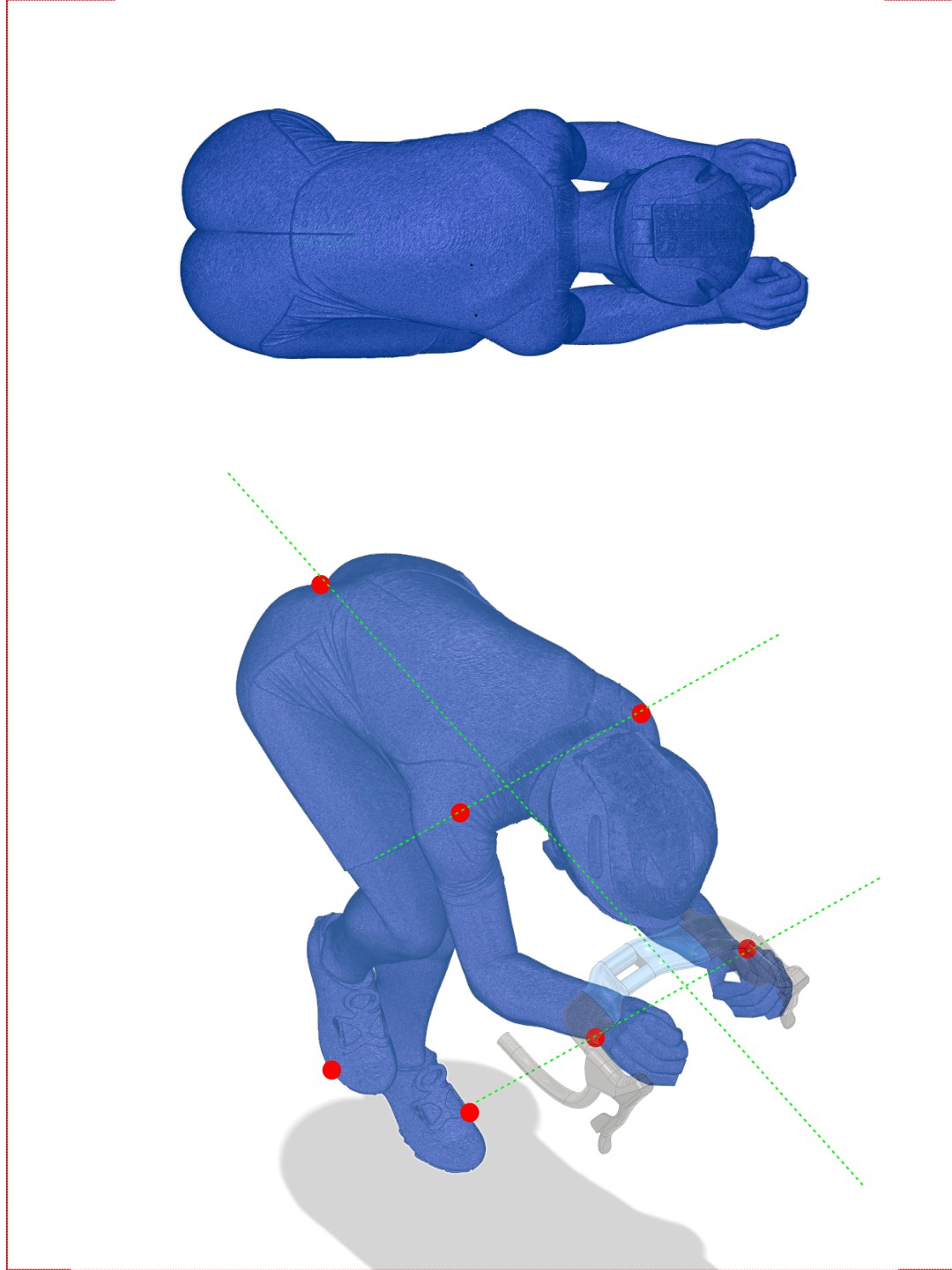
At TOOT Engineering, we choose science. We will continue to produce safe, high-performance components and are prepared to defend free competition in the appropriate legal venues




